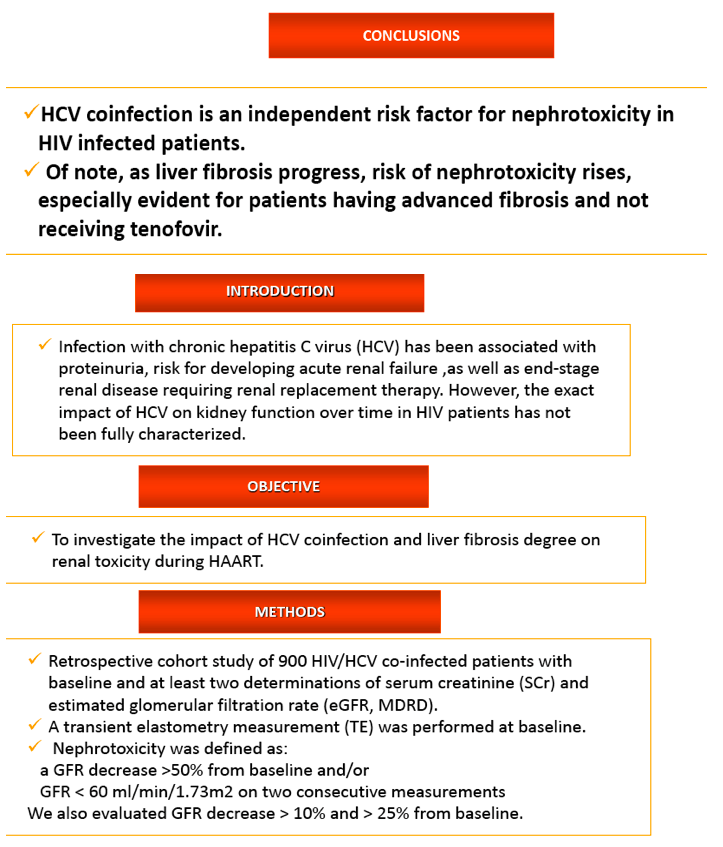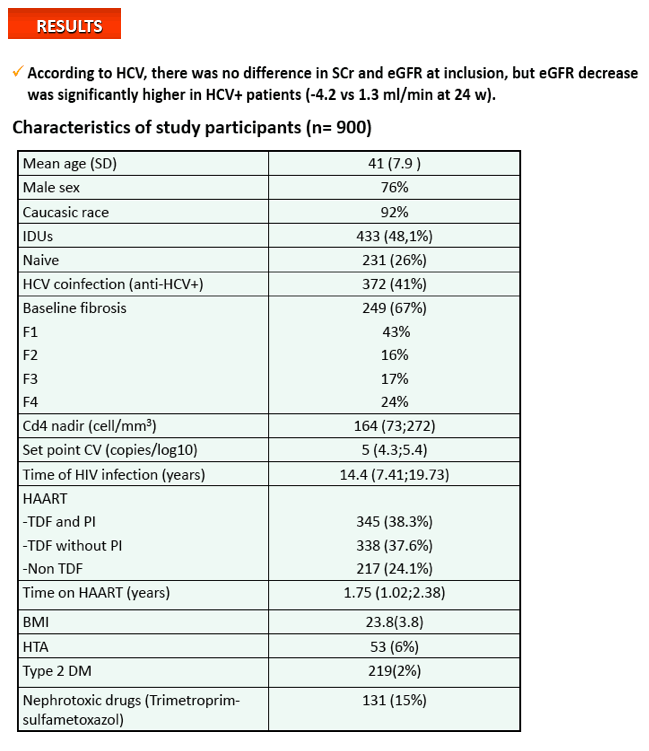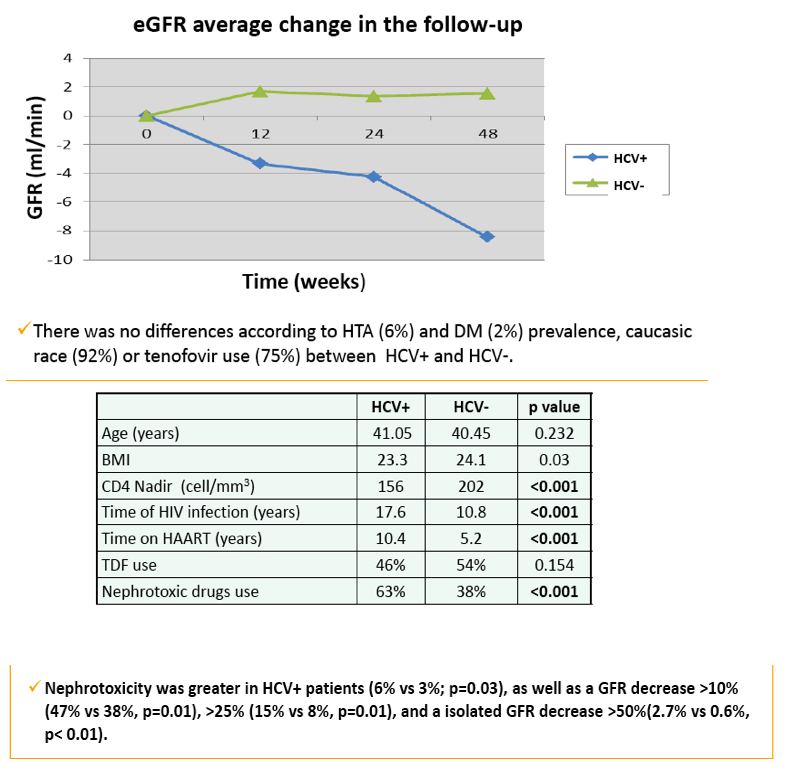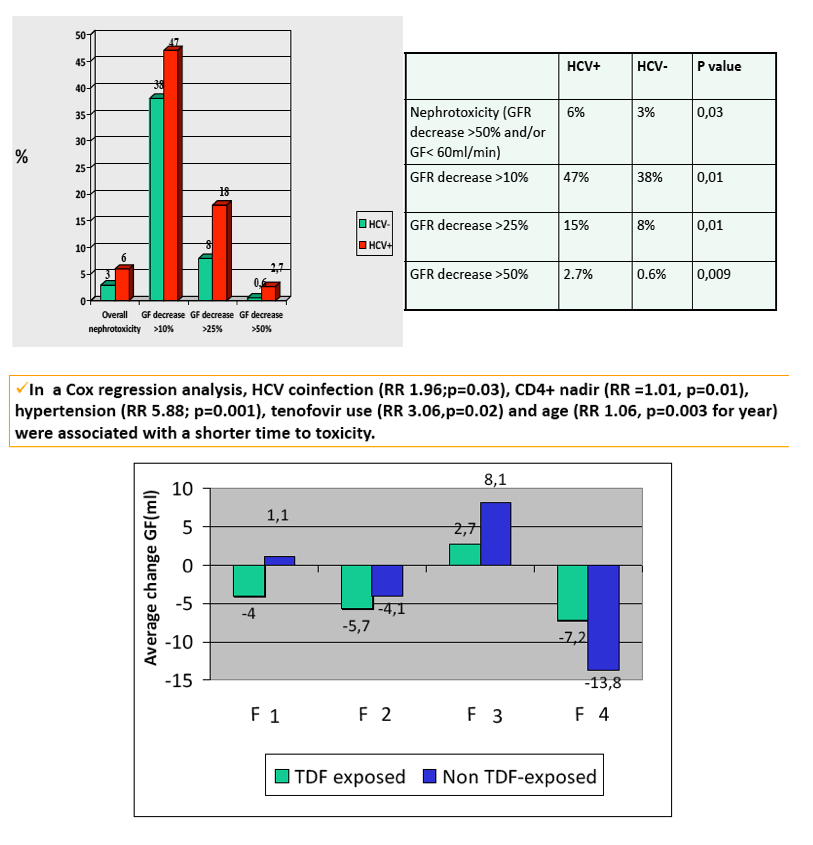 |
 |
 |
| |
HCV/HIV co-infection and the degree of liver fibrosis as risk factors of HAART-associated nephrotoxicity
|
| |
| |
Reported by Jules Levin
IAC Wash DC July 2012
M. del Palacio, A. Moreno, M. Martínez-Colubi, M.J. Pérez-Elías, P. Wikman, C. Quereda, P. Martí-Belda, S. Moreno, J.L. Casado
Dept of Infectious Diseases, Ramon y Cajal Hospital, Madrid, Spain
Background: To investigate the effect of HCV coinfection, and liver fibrosis degree, on renal toxicity during HAART.
Methods: Prospective cohort study of 900 HIV/HCV co-infected patients with baseline and at least two determinations of serum creatinine (SCr) and estimated glomerular filtration rate (eGFR, MDRD). A transient elastometry measurement (TE) was performed at baseline. Nephrotoxicity was defined as a GFR decrease >50% from baseline and/or GFR < 60 ml/min/1.73m2 on two consecutive measurements.
Results: Mean age was 41 years, 76% male, 92% caucasian race, 26% on first HAART line. Overall, 372 (41%) were HCV positive. TE was available in 249 cases, showing fibrosis stage 1 in 43 %, fibrosis 2 in 16%, fibrosis 3 in 17% and fibrosis 4 in 24%. According to HCV, there was no difference in SCr and eGFR at inclusion, but eGFR decrease was significantly higher in HCV+ patients (-4.2 vs -1.3 ml/min at 24 w). Nephrotoxicity was greater in HCV+ patients (6% vs 3%; p=0.03), as well as a GFR decrease > 10% (47% vs 38%, p=0.01), >25% (15% vs 8%, p=0.01), and a isolated GFR decrease >50%(2.7% vs 0.6%, p< 0.01). In a Cox regression analysis, HCV coinfection (RR 1.96; p=0.03), CD4+ nadir (RR =1.01, p=0.01), hypertension (RR 5.88; p=0.001), tenofovir use (RR 3.06, p=0.02) and age (RR 1.06, p=0.003 for year) were associated with time to toxicity. Globally, GFR decrease was higher in fibrosis 4 than 1 (-7.24 vs -4.04 ml/min at 24 w), and this difference was statistically significant in not tenofovir-treated patients (-13.83 vs +1.18 ml/min for fibrosis 4 vs 1, p< 0.01).
Conclusions: HCV coinfection is an independent risk factor for nephrotoxicity in HIV infected patients. Of note, as liver fibrosis progress, risk of nephrotoxicity rises, especially evident for patients having advanced fibrosis and not receiving tenofovir.
From Jules: if you look at the last graph below it appears as though advanced fibrosis F4 is where there is the most significant risk for nephrotoxicity.





|
| |
|
 |
 |
|
|